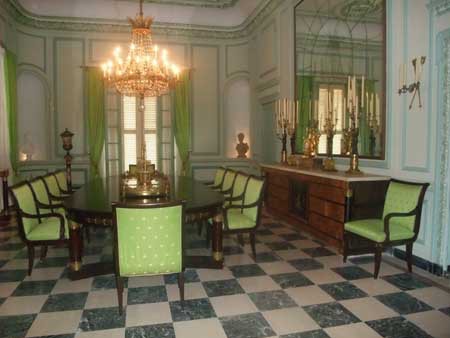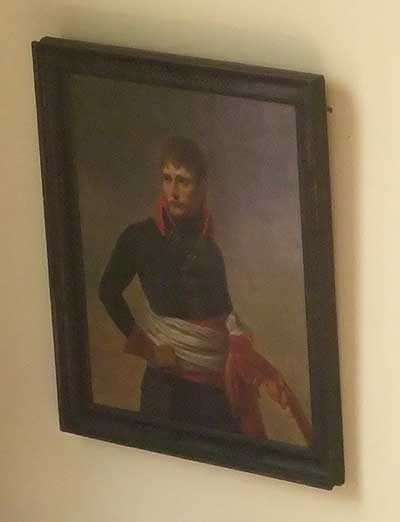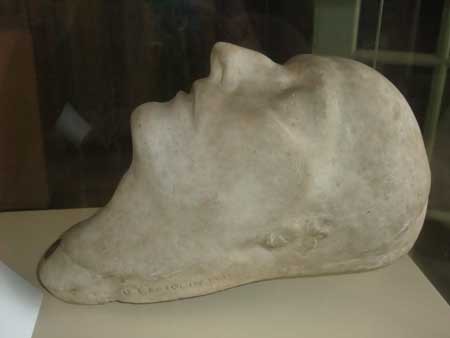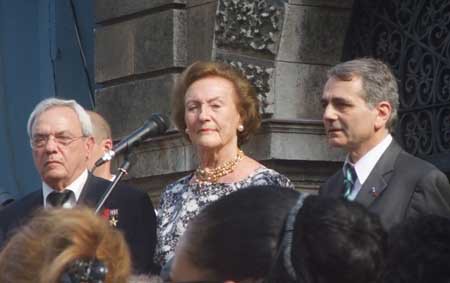The (re)opening ceremony
Closed to the public for a number of years, the semi-mythical Museo Napoleonico – in Havana, Cuba – reopened its doors on 30 March, 2011. This relaunch comes as part of the wider project to restore Havana's old town district, organised with a great deal of energy and patience by Eusebio Leal, Historiador (city historian) of Havana, and supported by the Cuban government.
The ceremony, which took place in the Caribbean island's beautiful capital, welcomed as its guest of honour HIH the Princesse Napoléon. Jean Mendelson, French ambassador, and the commander in charge of French forces in the Caribbean, Rear Admiral Loïc Raffaëlli, were also in attendance.
José Ramon Fernandez (vice-President of the Council of Ministers), Abel Prieto (Minister of Culture), Miguel Diaz-Canel (Education Minister) and a members of the diplomatic corps also attended the event. The museum – already well-known to Napoleonic enthusiasts and scholars – is now open to visitors.
The Museo Napoleonico
 The only one of its kind not just in Cuba but in the Caribbean – perhaps even America – the Museo Napoleonico was created in December 1961 with the collection of Napoleonic memorabilia originally belonging to Julio Lobo, a rich sugar baron (known as the “Sugar King”), following an agreement with Fidel Castro and his government. The museum was installed in a Florentine Renaissance-style building built between 1926 and 1929 by the famous Cuban architects, Evelio Govantes and Félix Cabarrocas.
The only one of its kind not just in Cuba but in the Caribbean – perhaps even America – the Museo Napoleonico was created in December 1961 with the collection of Napoleonic memorabilia originally belonging to Julio Lobo, a rich sugar baron (known as the “Sugar King”), following an agreement with Fidel Castro and his government. The museum was installed in a Florentine Renaissance-style building built between 1926 and 1929 by the famous Cuban architects, Evelio Govantes and Félix Cabarrocas.
 Robert Lefèvre, as well as numerous examples of Consulate and Empire period furniture originally belonging to Julio Lobbo who, during the 1950s, became notorious amongst Paris' rare booksellers for his pillaging “raids” carried out on their catalogues.
Robert Lefèvre, as well as numerous examples of Consulate and Empire period furniture originally belonging to Julio Lobbo who, during the 1950s, became notorious amongst Paris' rare booksellers for his pillaging “raids” carried out on their catalogues.
 Also on display are a number of items once owned by Antommarchi, Napoleon's last doctor on St Helena, who after Napoleon's death took up residence in Santiago de Cuba and who subsequently died there in 1838 of yellow fever. These include Napoleon's bronze telescope, two death masks of Napoleon – models made in the 1830s by Antommarchi – and a watch believed to have been given to the doctor by the deposed French emperor and recently donated to the museum by Raoul Castro. To mark the reopening of the museum, the Princess Napoleon donated from her own collection several pieces of Sèvres porcelain.
Also on display are a number of items once owned by Antommarchi, Napoleon's last doctor on St Helena, who after Napoleon's death took up residence in Santiago de Cuba and who subsequently died there in 1838 of yellow fever. These include Napoleon's bronze telescope, two death masks of Napoleon – models made in the 1830s by Antommarchi – and a watch believed to have been given to the doctor by the deposed French emperor and recently donated to the museum by Raoul Castro. To mark the reopening of the museum, the Princess Napoleon donated from her own collection several pieces of Sèvres porcelain.
The Museo Napoleonico's restoration project was made possible by the efforts of the Cuban government which, since 1968 has supported the patient and dedicated work of Eusebio Leal, “Historiador” for the city of Havana, in his task of restoring the city's rich cultural heritage. In the words of the “Historiador”, this exceptional museum will contribute to “the study of a universal phenomenon which had such an influence on so many countries, including Latin America”. Jean Mendelson, French Ambassador to Cuba, added that it served to highlight France and Cuba's “shared heritage”.


